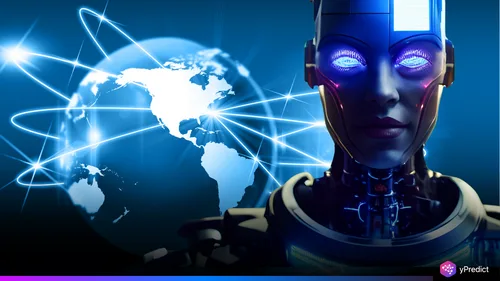
At first, the internet was conceived as a means of communication and information sharing. What began as a military project evolved into a unifying force on the planet. It brought people, businesses, and governments together, and began to change economies and industries. But there was a deeper transformation happening, a foundation for intelligence that would develop over time to be artificial intelligence.
There is no way artificial intelligence could have evolved without the internet. The flow of data, global networks, and adoption of digital platforms provided the right ecosystem. Similar to a Trojan horse, the invisible groundwork of the internet had inserted the foundation of artificial intelligence into our lives, without us realizing it.
How the Internet Built the Foundation of Artificial Intelligence
The foundation of artificial intelligence is data, and the Internet became its largest supplier. Every website, social media post, search query, and email added to a pool of information. This data trained algorithms to learn, improve, and eventually power modern AI systems. The Internet did not only connect people but also connected knowledge, creating a living ecosystem for AI development.
The availability of this data made the growth of AI faster than any other technological leap. Machine learning models needed massive datasets, and the Internet delivered them endlessly. Without global digital connectivity, the pace of artificial intelligence research would have been far slower.
The Role of Connectivity in AI Expansion
Connectivity did more than provide information, it also accelerated collaboration. Researchers across the world shared ideas, innovations, and breakthroughs instantly. Startups and companies tested AI-driven applications on platforms, gaining feedback in real time. This cycle of innovation strengthened the foundation of artificial intelligence and made it scalable across industries.
The Internet and technology together changed how businesses function. Search engines, recommendation systems, and chat applications all became early experiments in AI adoption. As these systems improved, the world began to experience intelligent tools without fully realizing the Trojan horse effect.
The Internet as a Testing Ground for AI
The Internet also acted as a live testing ground for AI applications. Search algorithms learned from billions of queries, while social media platforms fine-tuned recommendation systems. E-commerce websites developed predictive engines that anticipated consumer behavior. These applications were more than tools, they were large-scale experiments that pushed the growth of AI into everyday use.
AI was not delivered suddenly, it crept into people’s routines. From spell checkers to virtual assistants, every improvement looked like convenience but carried deeper intelligence. The Internet allowed AI to blend seamlessly into daily interactions, making the technology both accepted and trusted.
The Symbiotic Relationship Between the Internet and AI
The Internet and technology established a strong partnership with AI. The Internet provided the fuel for AI development, and as AI evolved it made the Internet smarter. Recommendation engines, spam filters, translation services, and fraud detection systems have improved user experience. As the Internet grows larger, there are even more opportunities for AI to evolve.
Today, AI is behind online search, healthcare systems, finance and entertainment platforms. Every click and interaction enhances machine learning, which add essential bricks to the edifice of artificial intelligence. The Trojan horse has unveiled itself and it is clear that connectivity is more than just communication; it has served to enable intelligent machines.
AI Beyond the Internet
Artificial Intelligence relies on the Internet; but, AI is also starting to move beyond the Internet. Edge computing, autonomous systems, and robotics are examples of AI working independently of traditional online mediums.
While AI technology gradually influences how the net grows, growth credited more to 5G, IoT, cloud computing capabilities to provide Internet infrastructure to 1.7 billion global users.
How the next phase of the Internet and technologies evolve could have a significant impact on how AI integrates into human life assuming we are able to responsibly design the ethical frameworks, data privacy, and responsible use protocols that will likely define if future AI remains a Trojan horse as a gift or governance threat.
Final Thoughts
The development was not only a revolution in communication, it was also the invisible architect of artificial intelligence. Including data as fuel, communications established collaborative environments with low-barrier entry and a test bed for large-scale experimentation with intelligent systems. What may have appeared to be a tool of communication became the most powerful driving force for intelligent systems.






